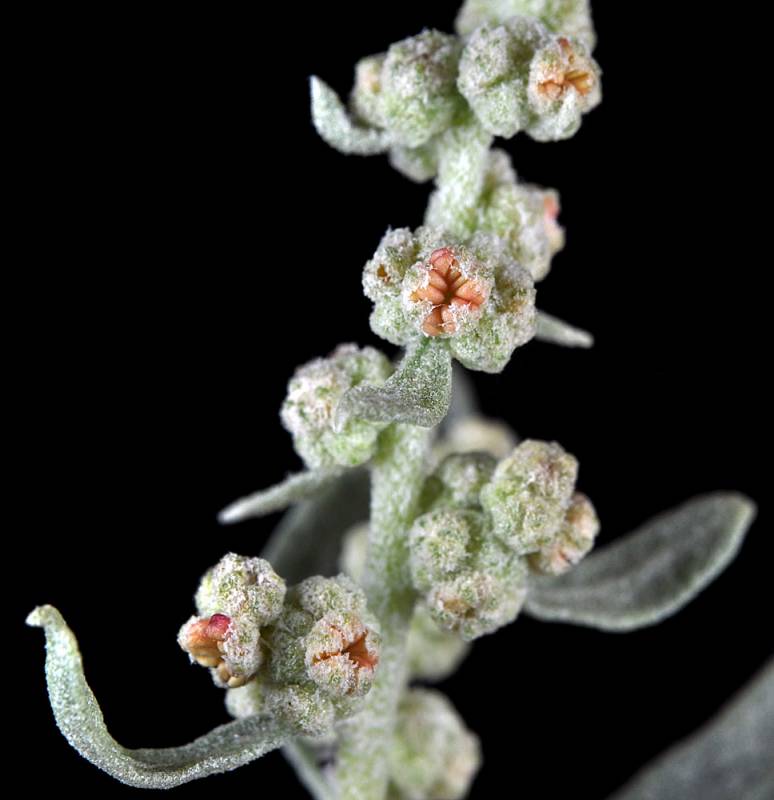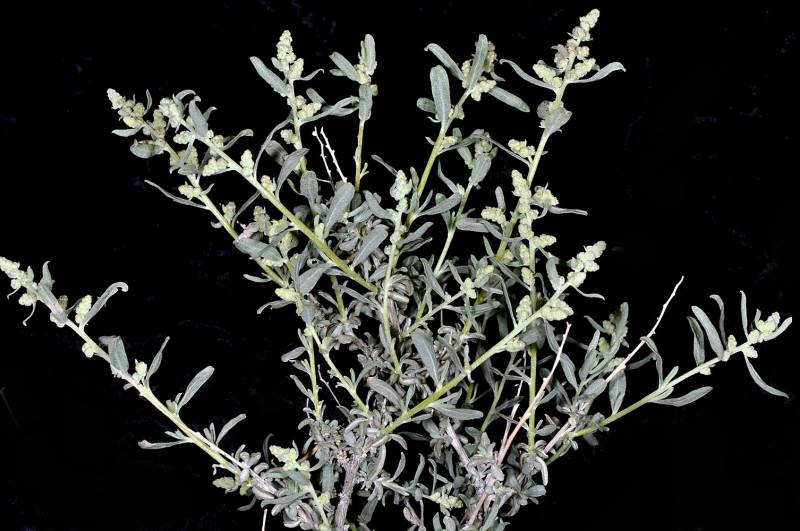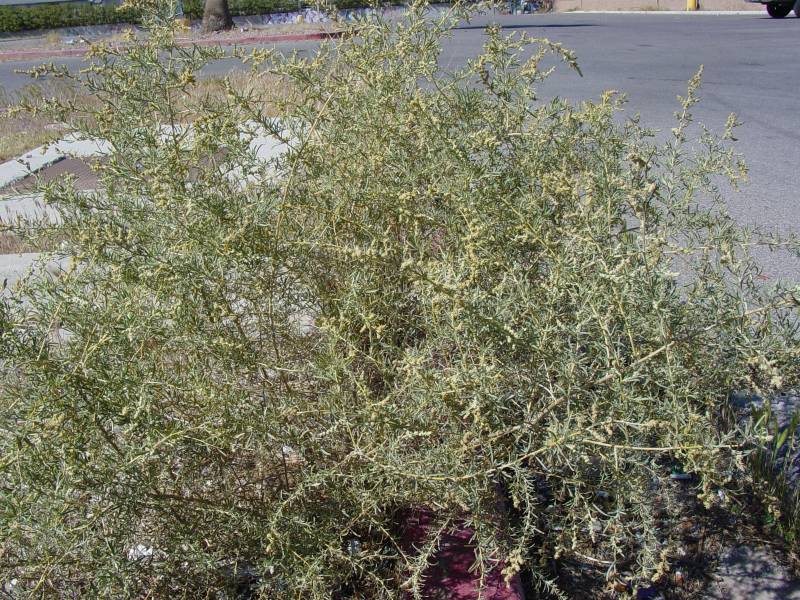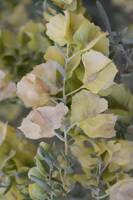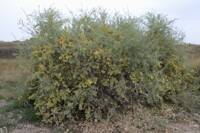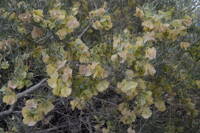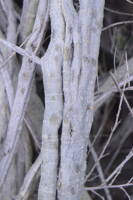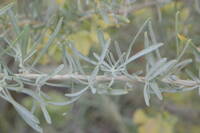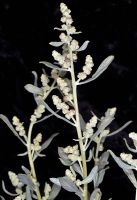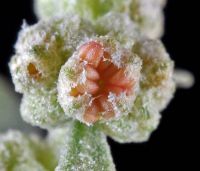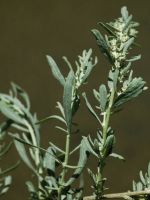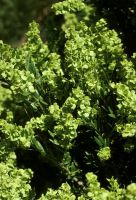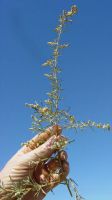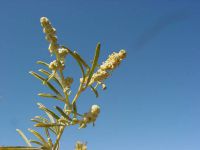Distribution: Occurring east of the Cascades crest in Washington; Washington to California, east to the Great Plains.
Habitat: Sand or gravel slopes and sagebrush flats, saline or not.
Flowers: June-August
Origin: Native
Growth Duration: Perennial
Conservation Status: Review Group 1 in Washington (WANHP)
Pollination: Wind
Dioecious, rounded, freely branched shrub 4-20 dm. tall, the branches stout, terete, at first whitish-scurfy, the outer layer later peeling off.
Leaves numerous, alternate, from elliptic to linear, sessile, 2-5 cm. long and 2-8 mm. wide, entire, grayish-scurfy.
Staminate flowers tawny, glomerate in numerous spikes that form large, leafy panicles, the perianth cleft to the base into 5 scurfy segments; pistillate flowers few to many in open to congested, leafy to naked spikes and panicles; each flower subtended by 2 bracts, which are completely fused, enclosing the fruit, and enlarging to 5-15 mm.
Utricle enclosed by the fused bracts, which have 4 wings lengthwise, the wings broader and longer than the body of the bract, sharply toothed and strongly net-veined.
Publication: Gen. N. Amer. Pl. 1: 197. 1818.
Atriplex nuttallii Wats. var. nuttallii [HC]
-
var. canescens – hoary saltbush
 Occurring east of the Cascades crest in Washington; Washington to California, east to the Great Plains.
Occurring east of the Cascades crest in Washington; Washington to California, east to the Great Plains.
PNW Herbaria: Specimen records of Atriplex canescens in the Consortium of Pacific Northwest Herbaria database
WA Flora Checklist: Atriplex canescens checklist entry
OregonFlora: Atriplex canescens information
E-Flora BC: Atriplex canescens atlas page
CalPhotos: Atriplex canescens photos

